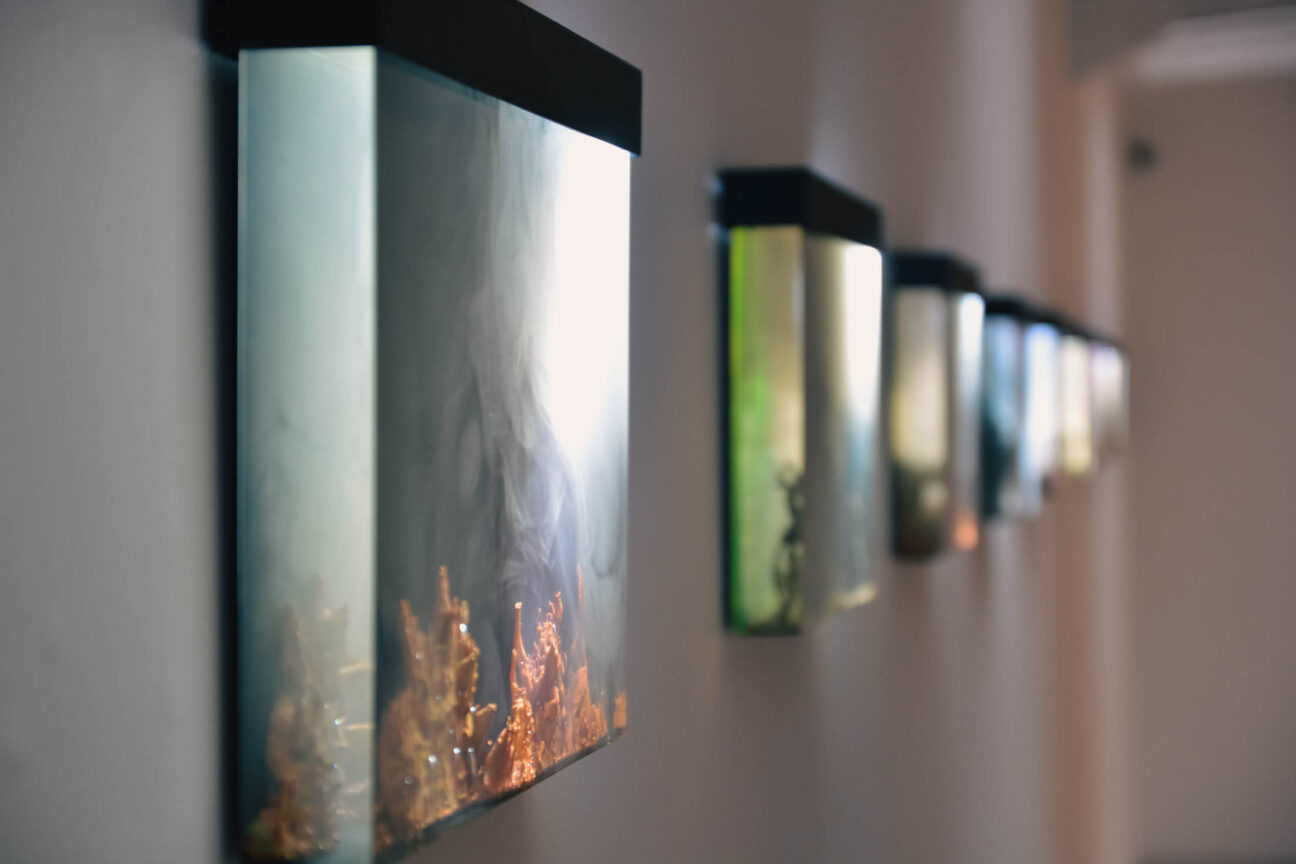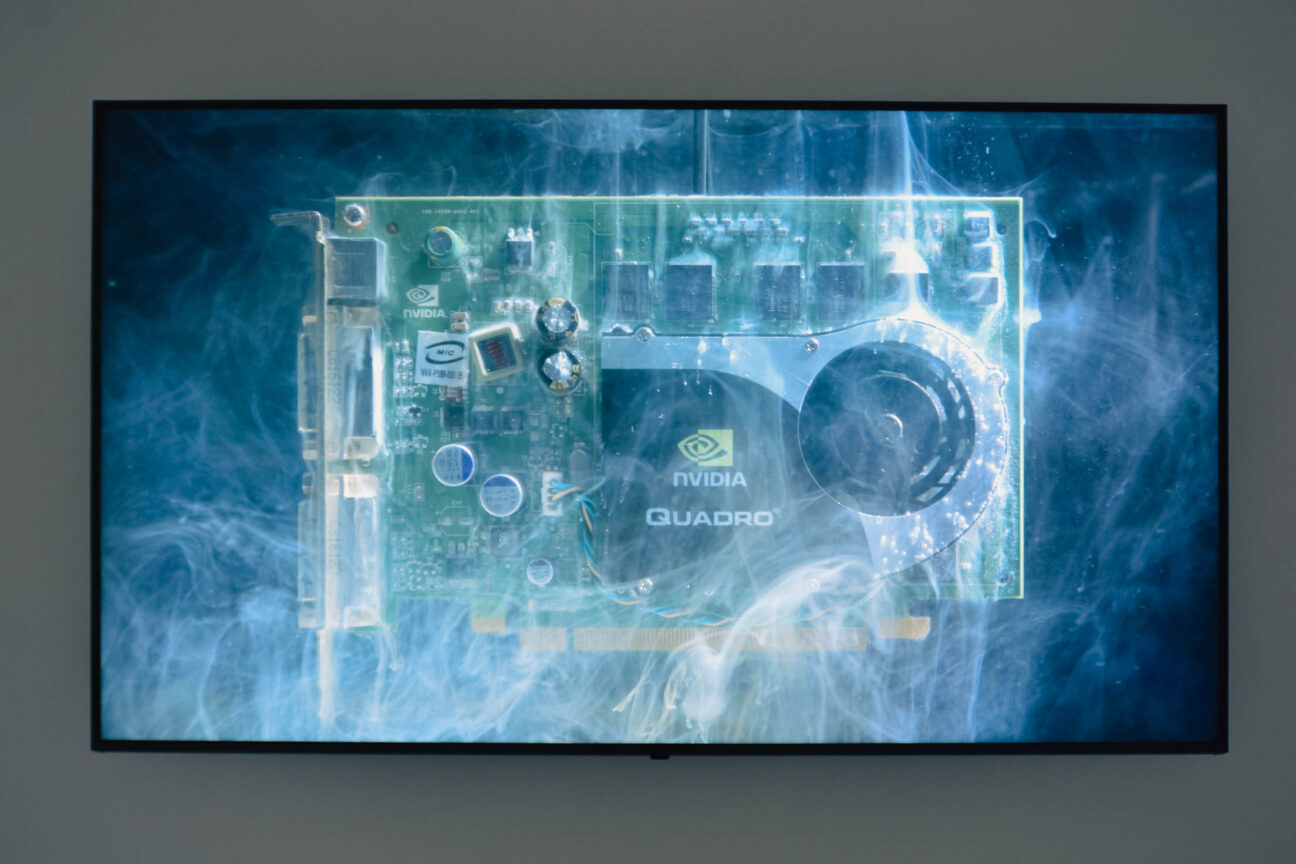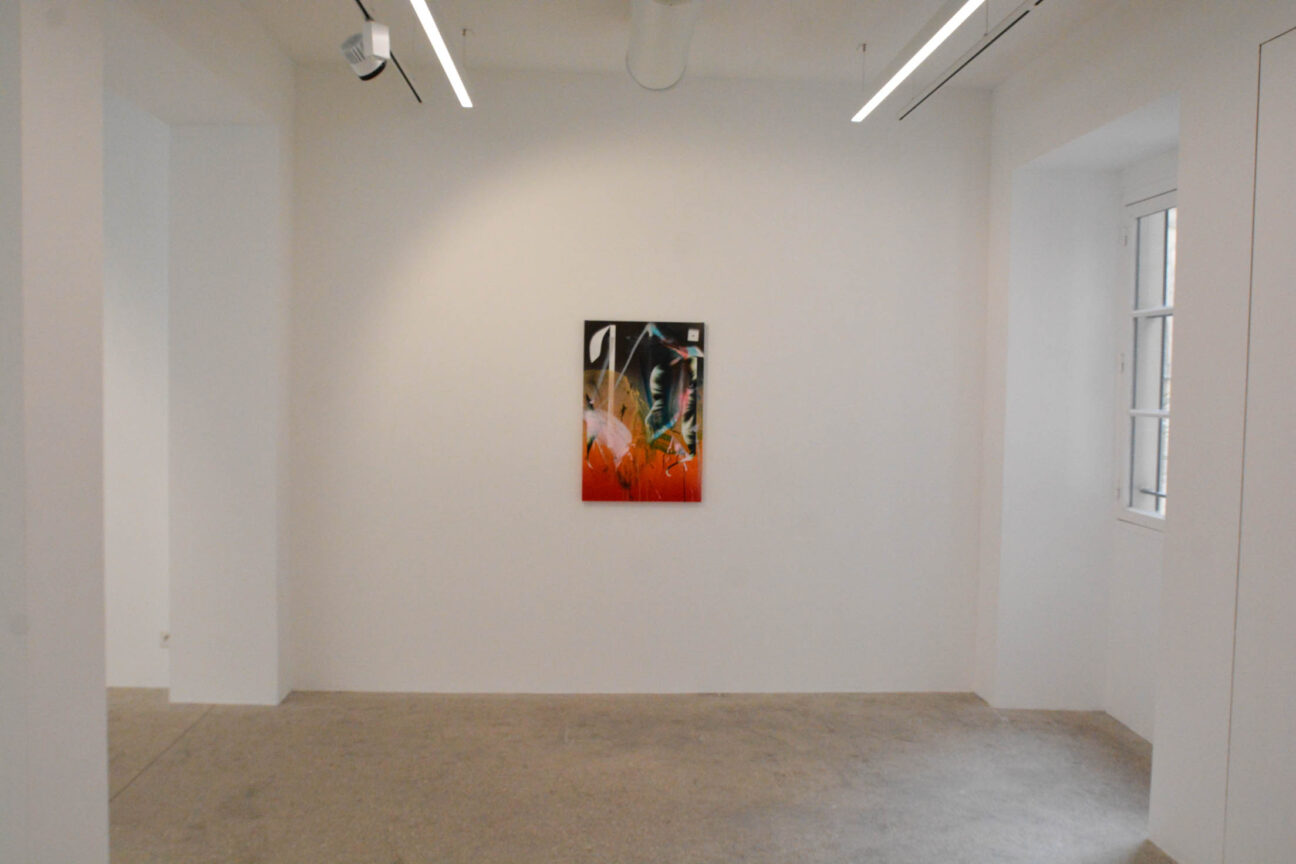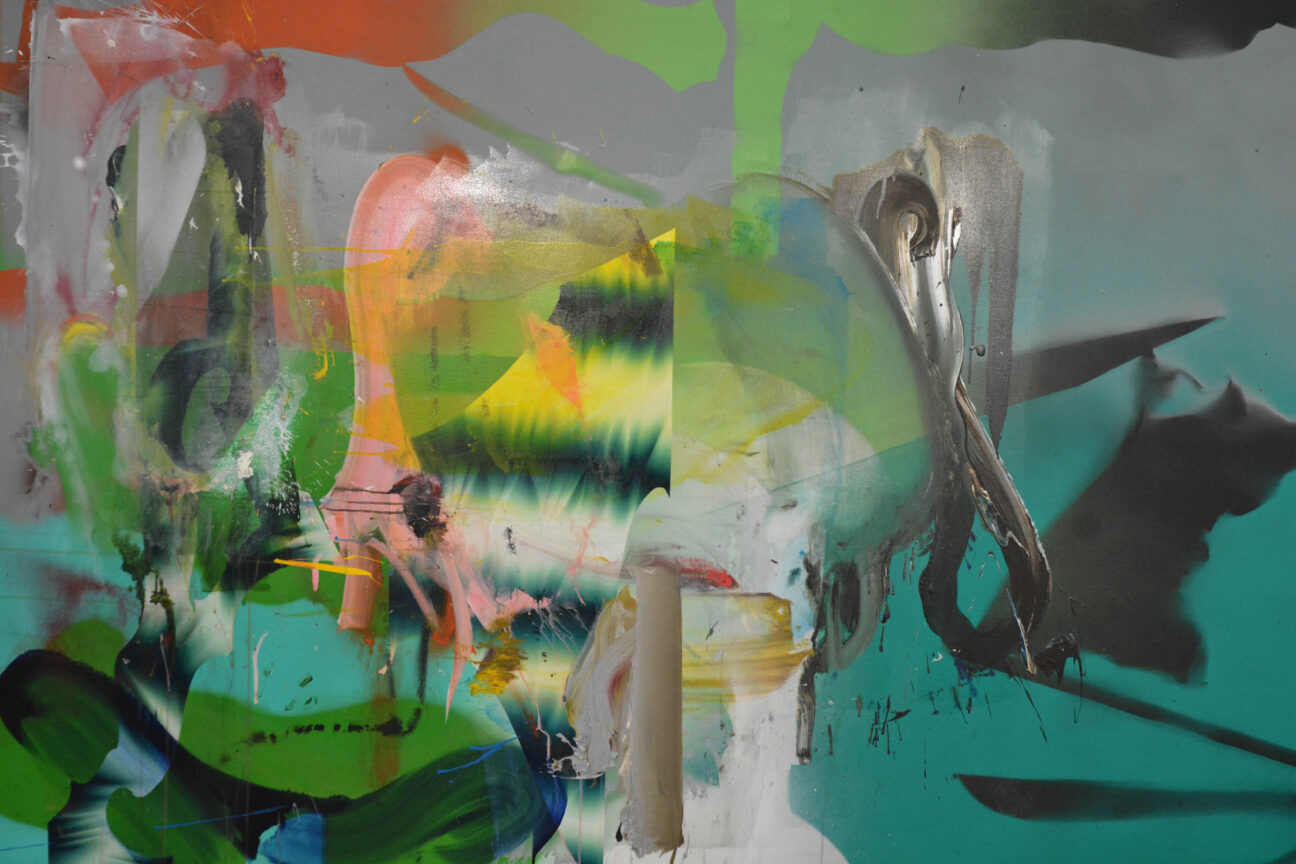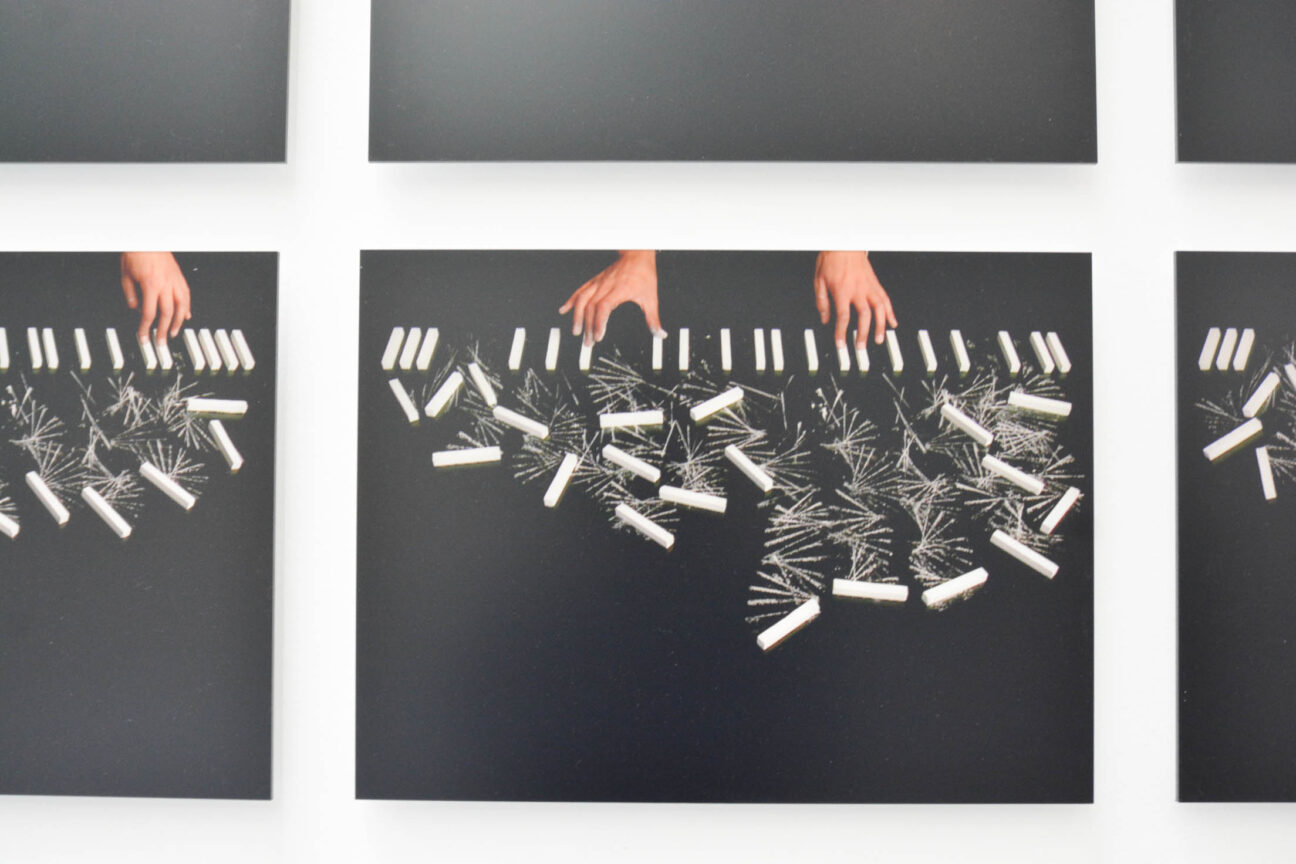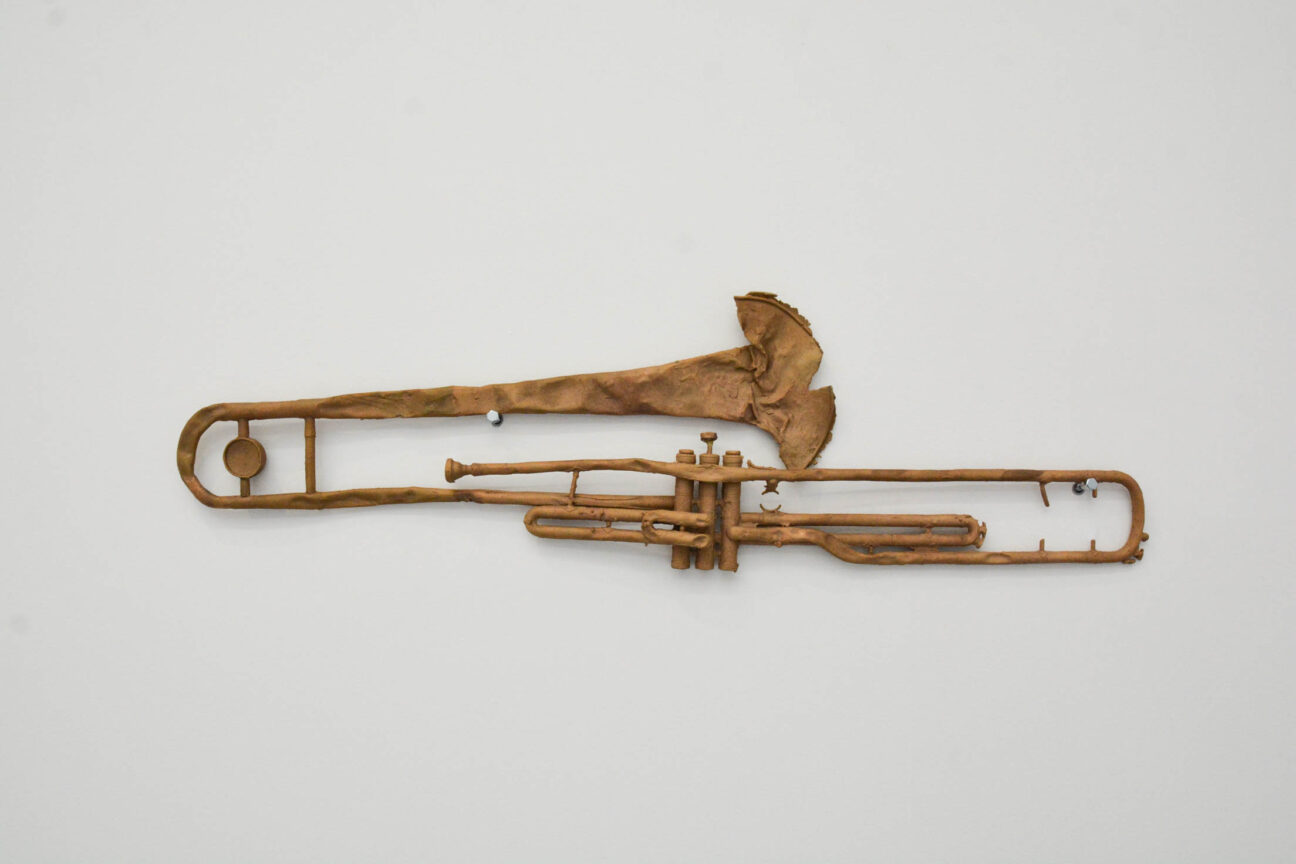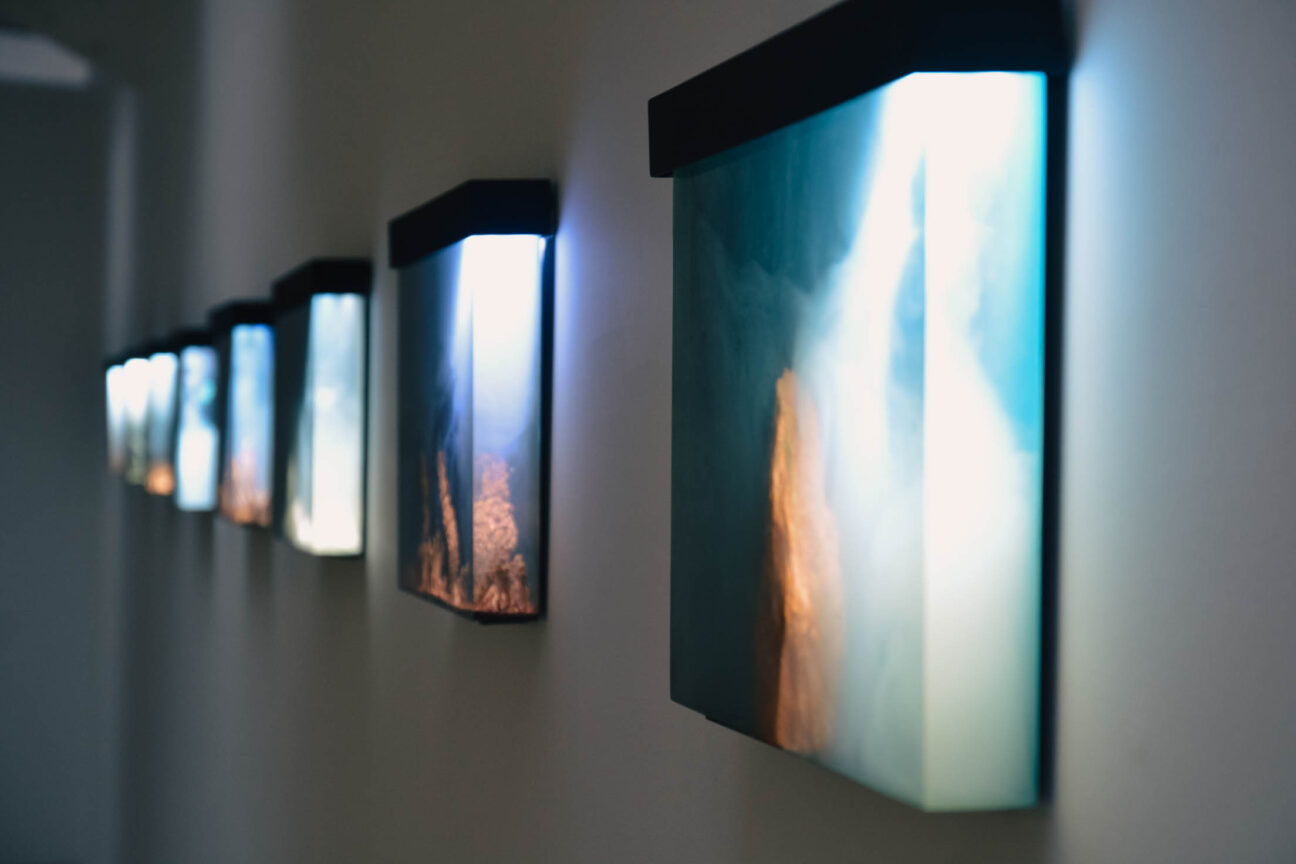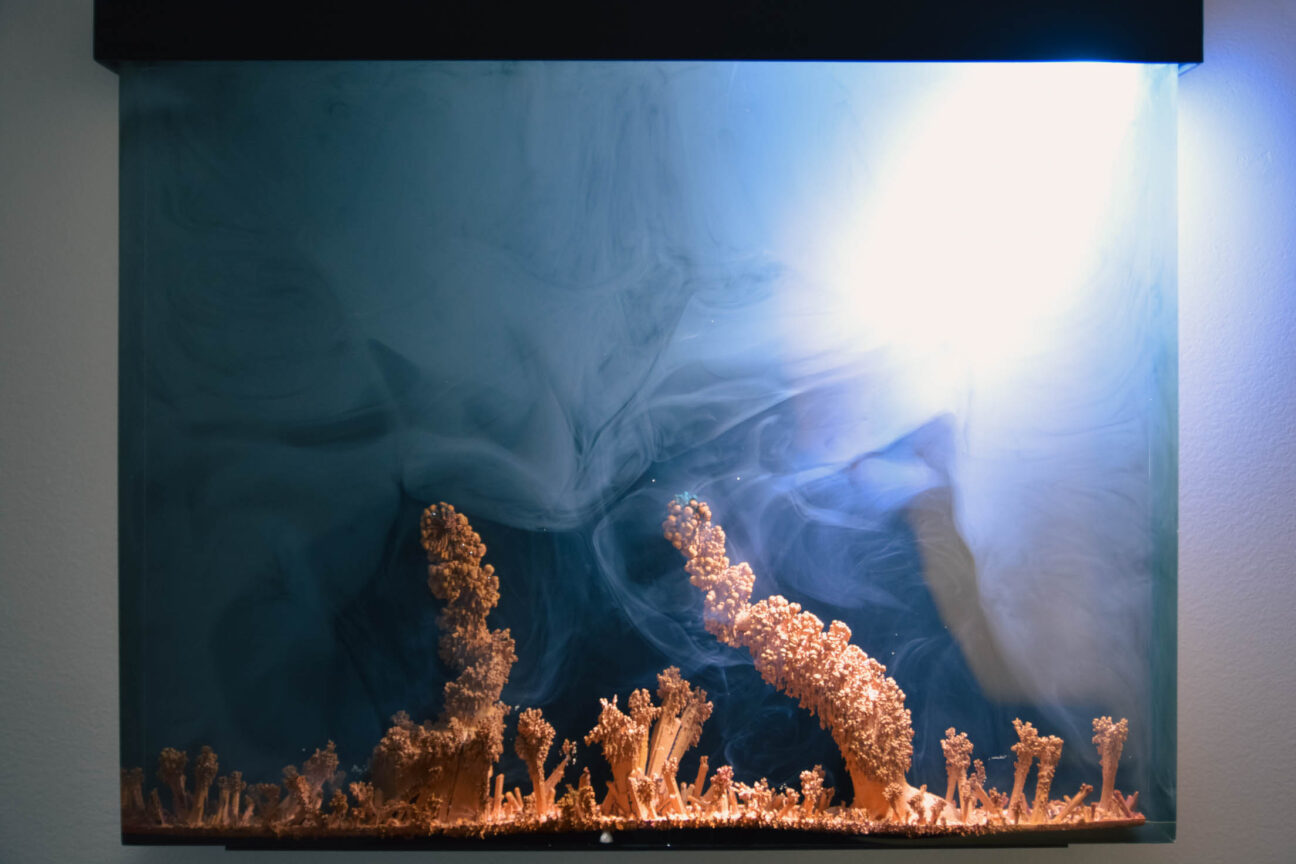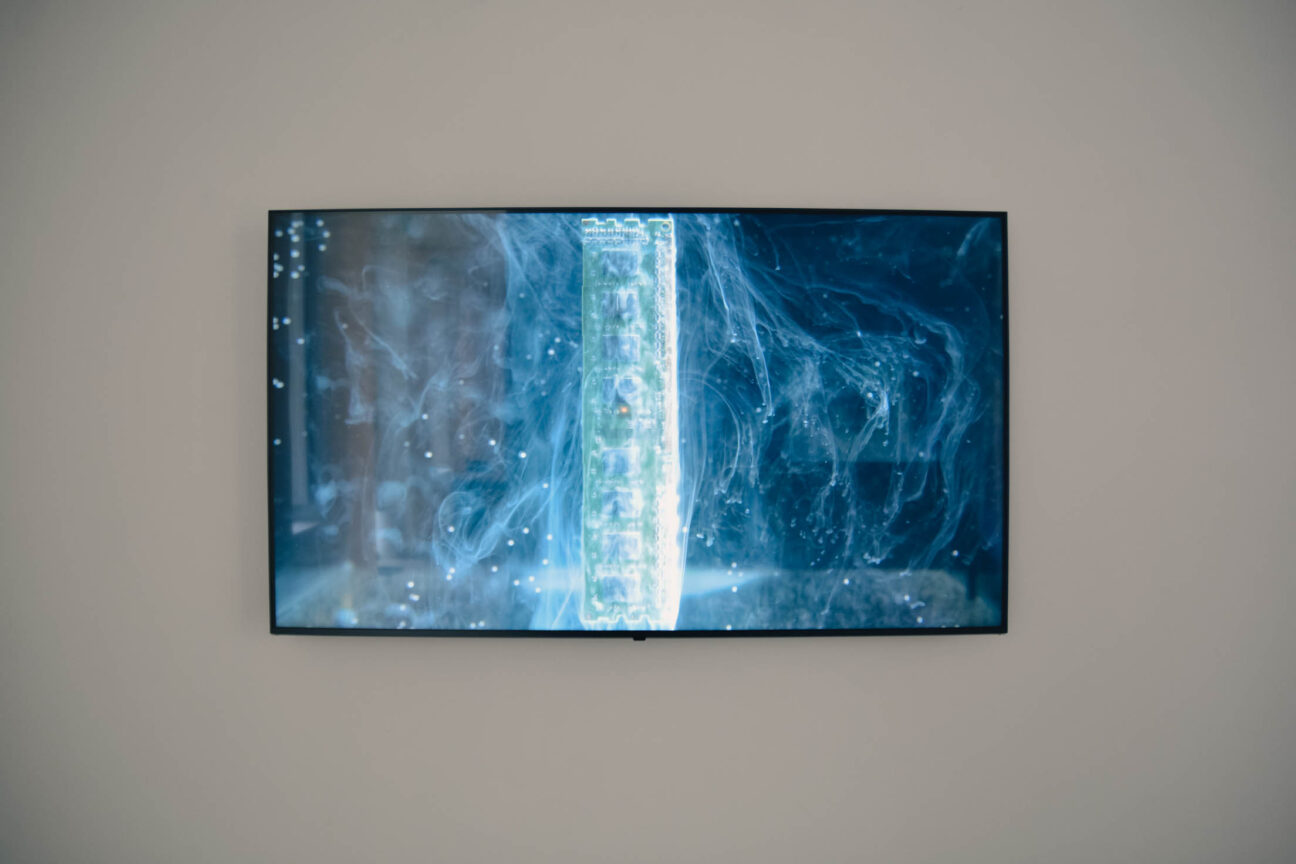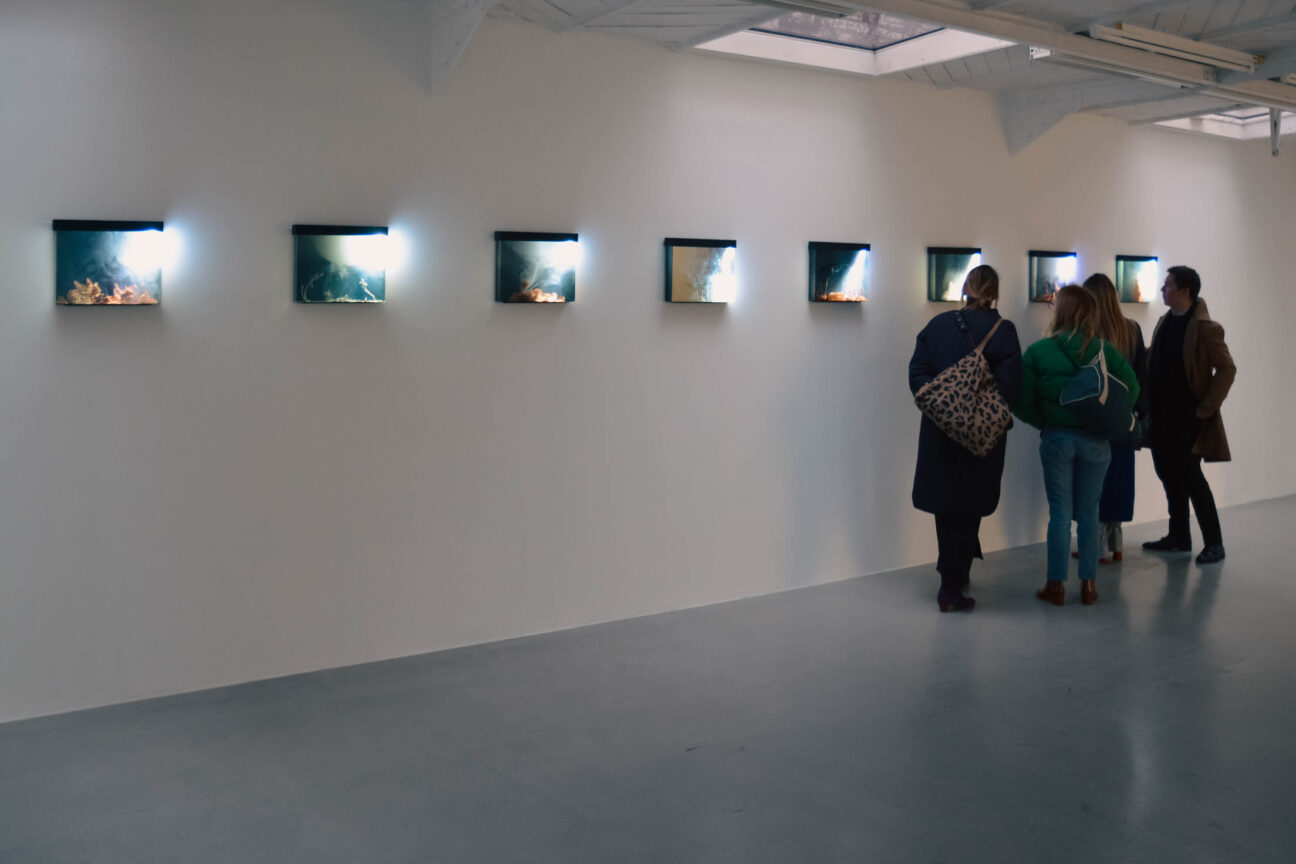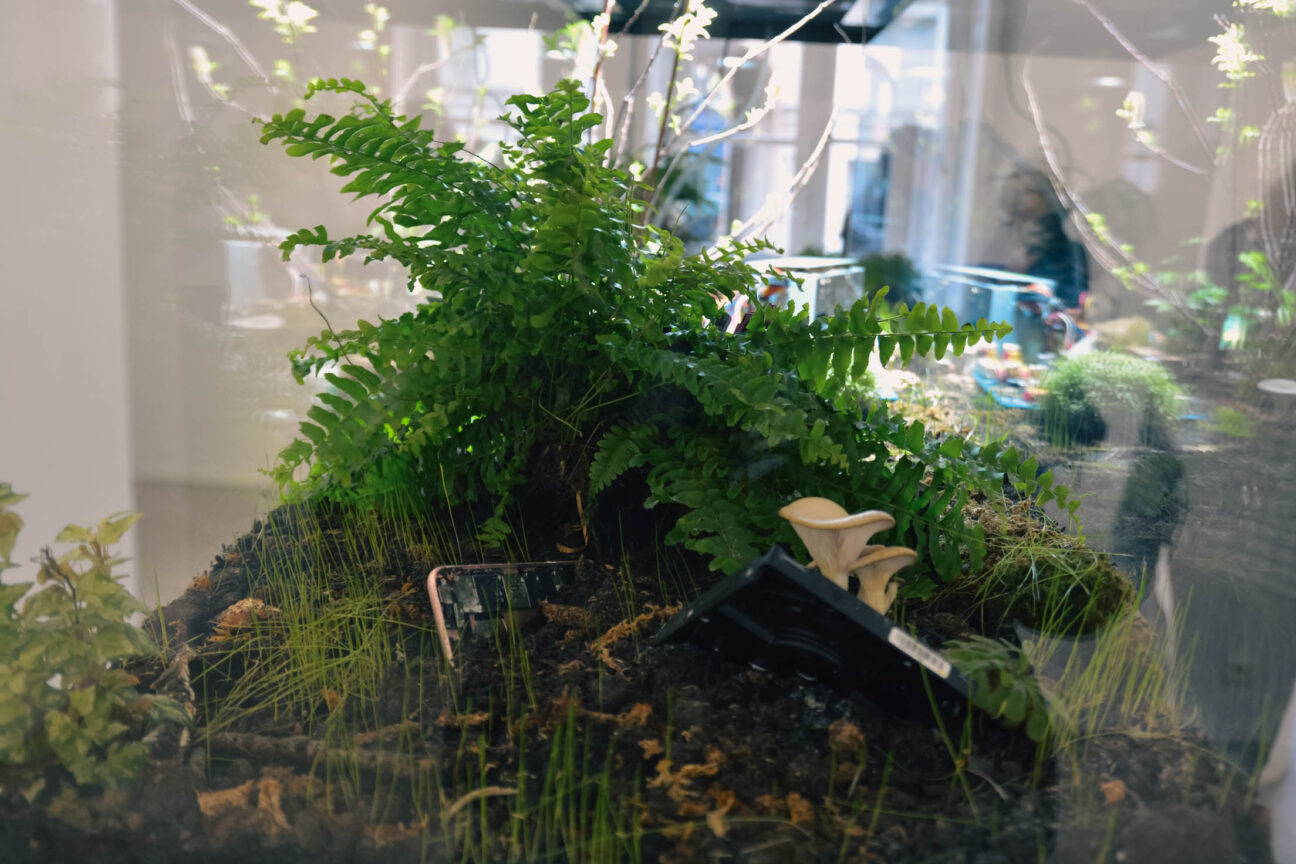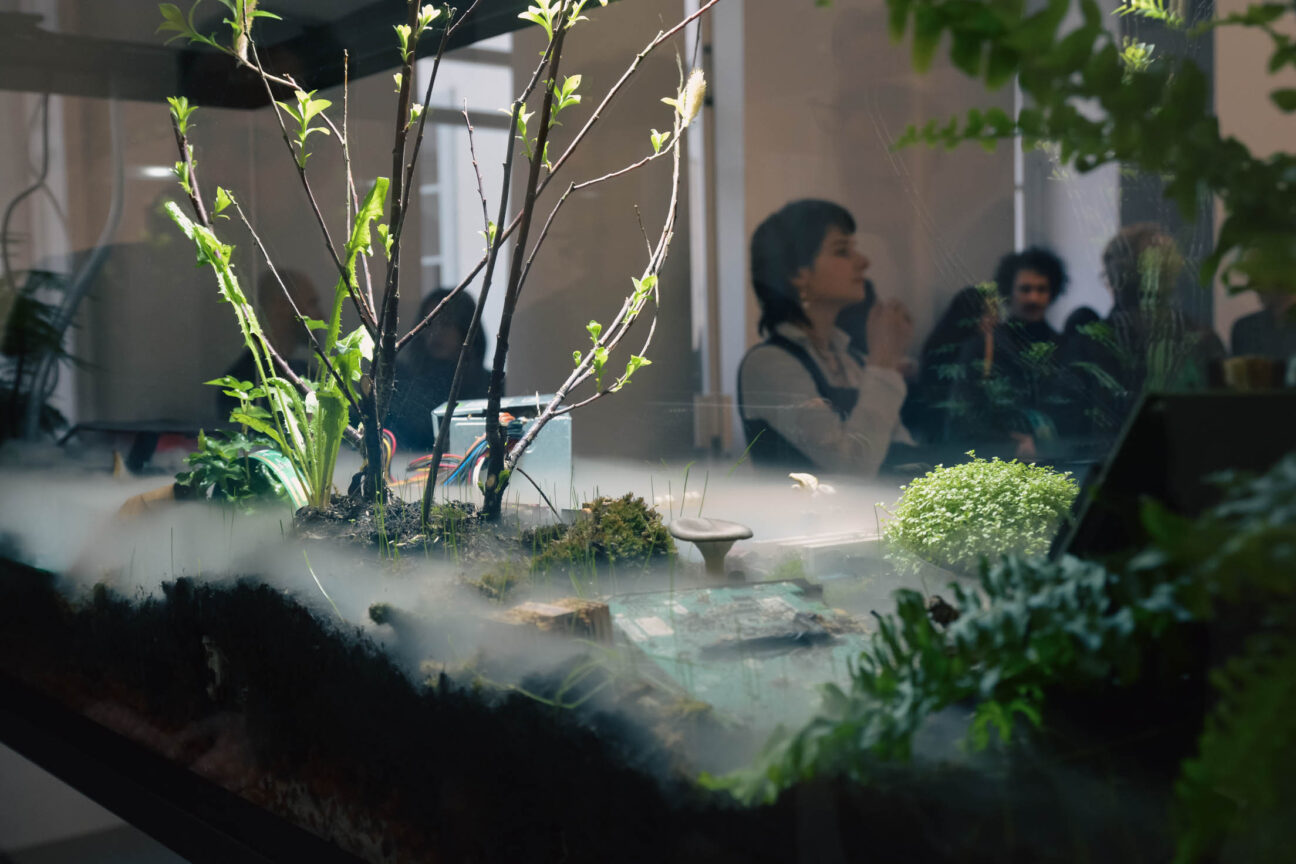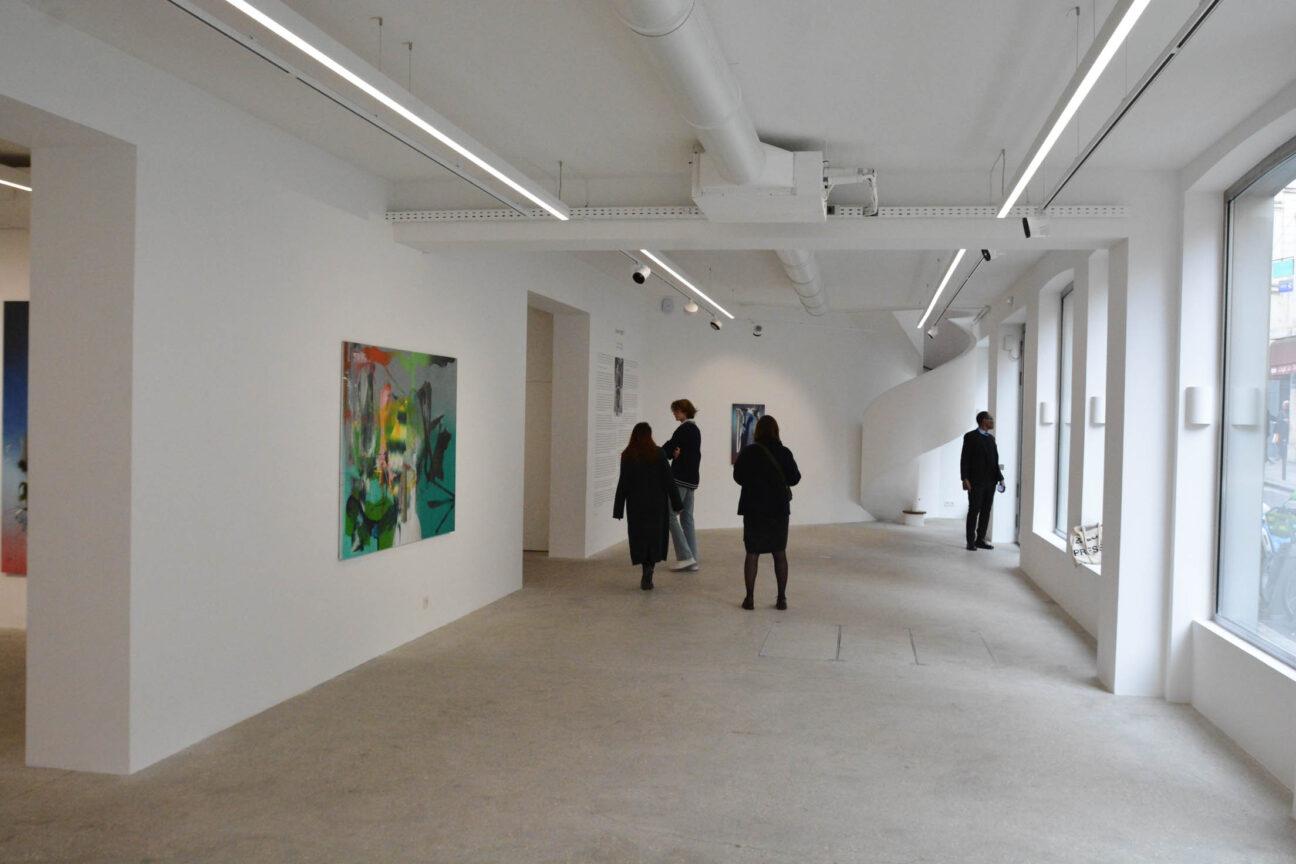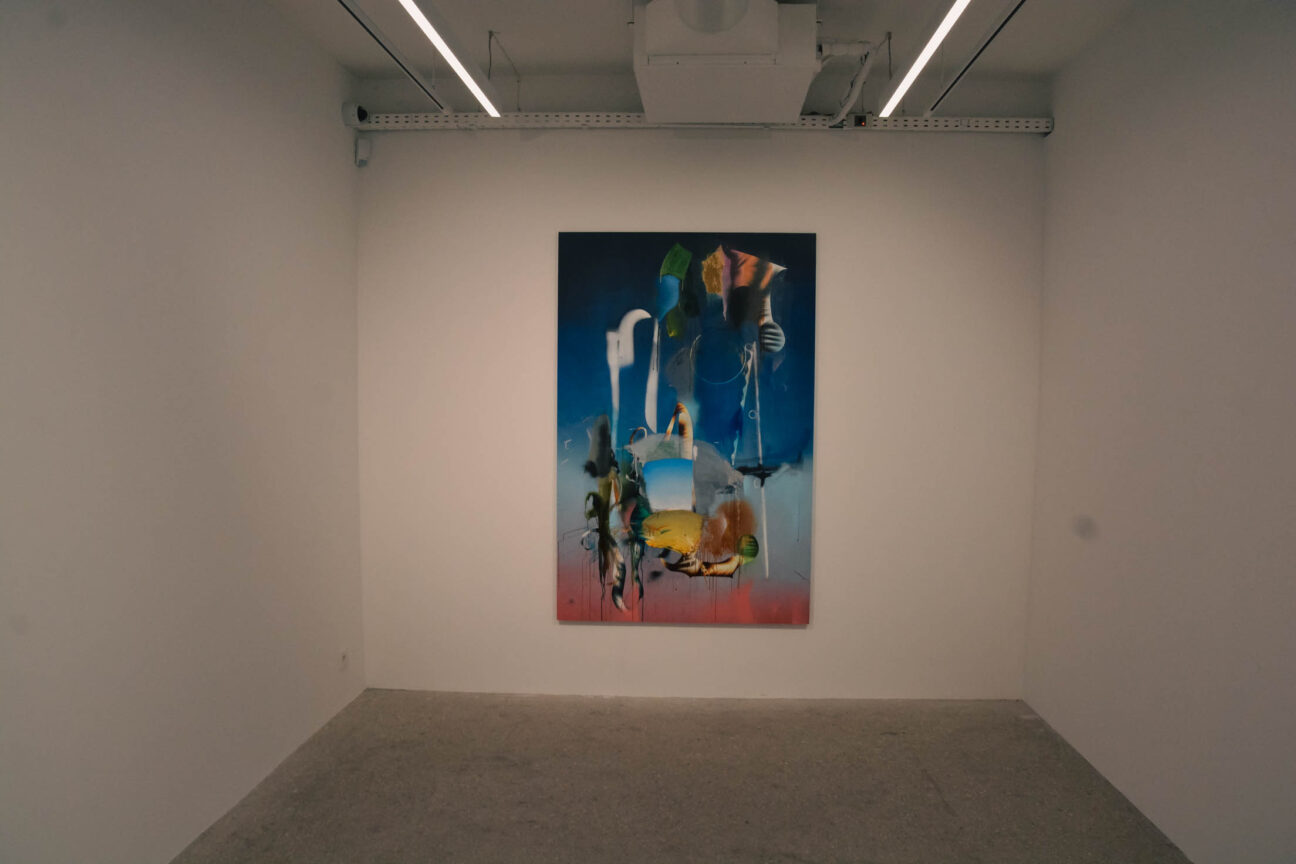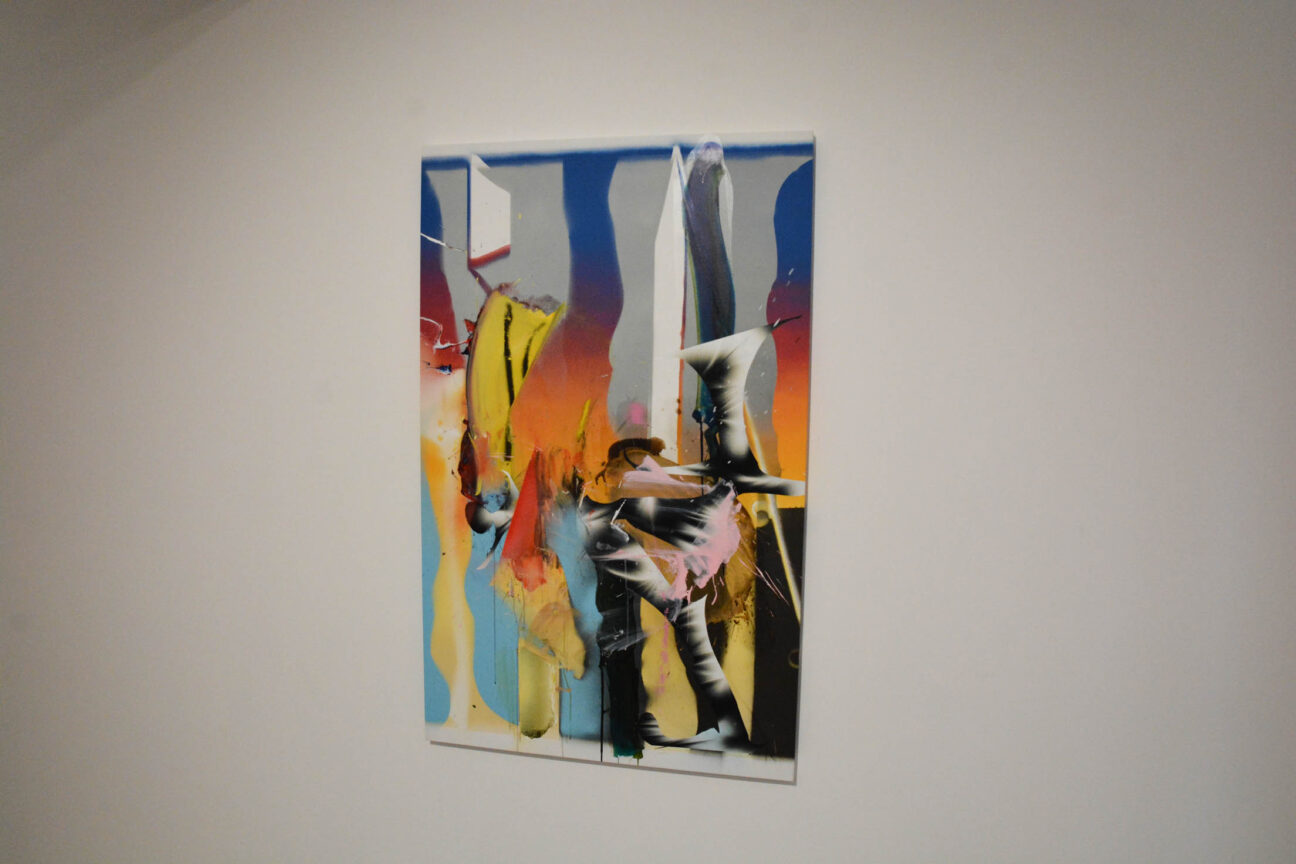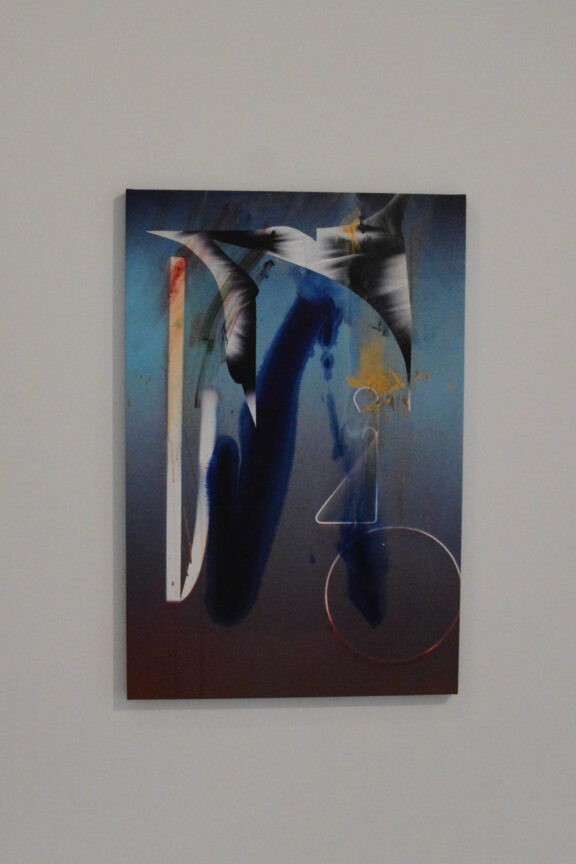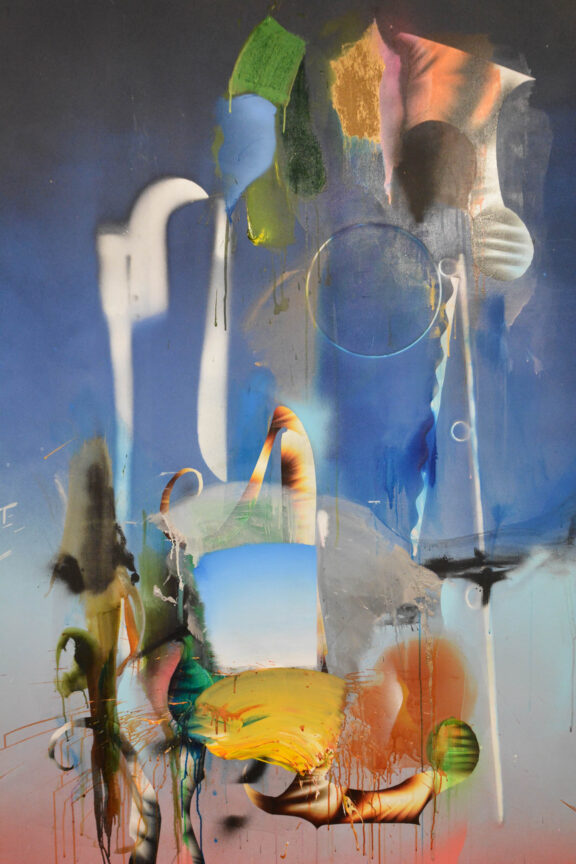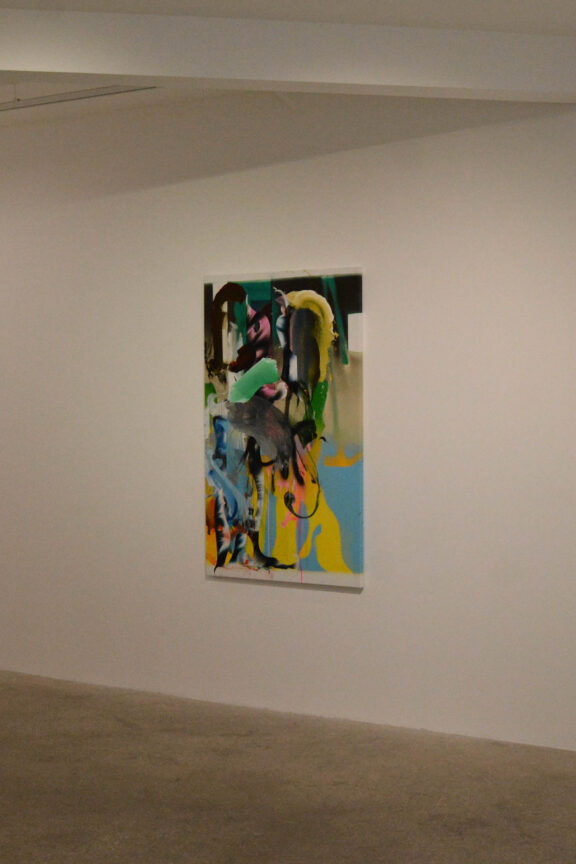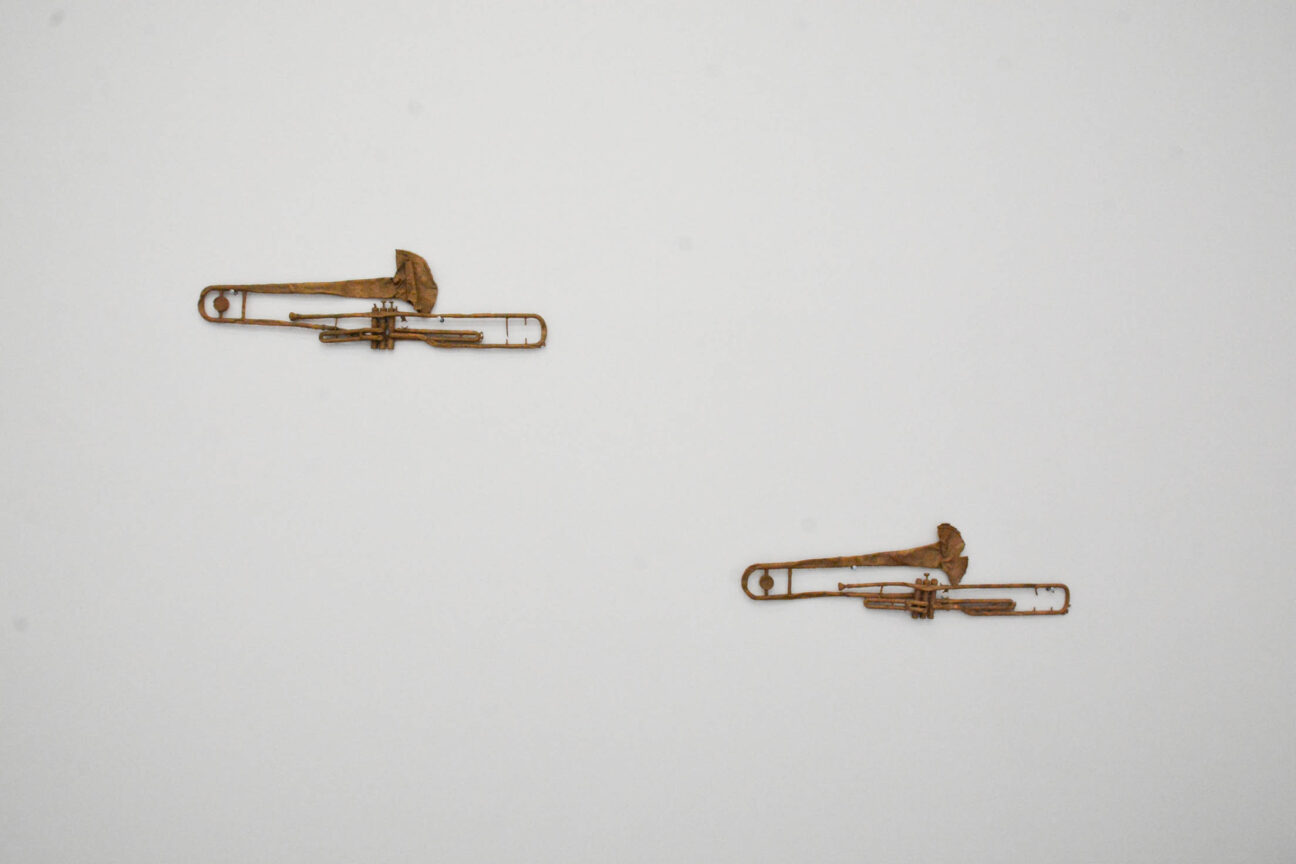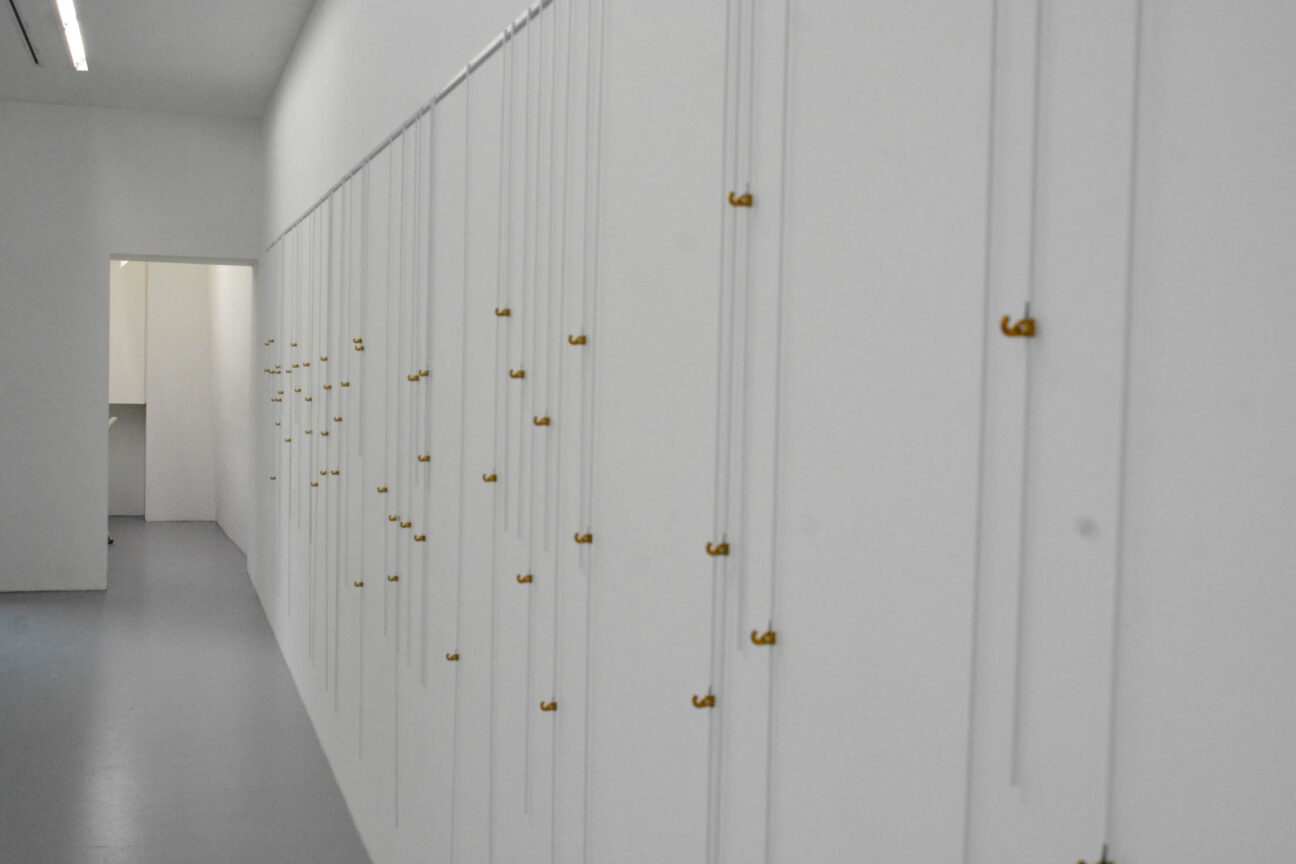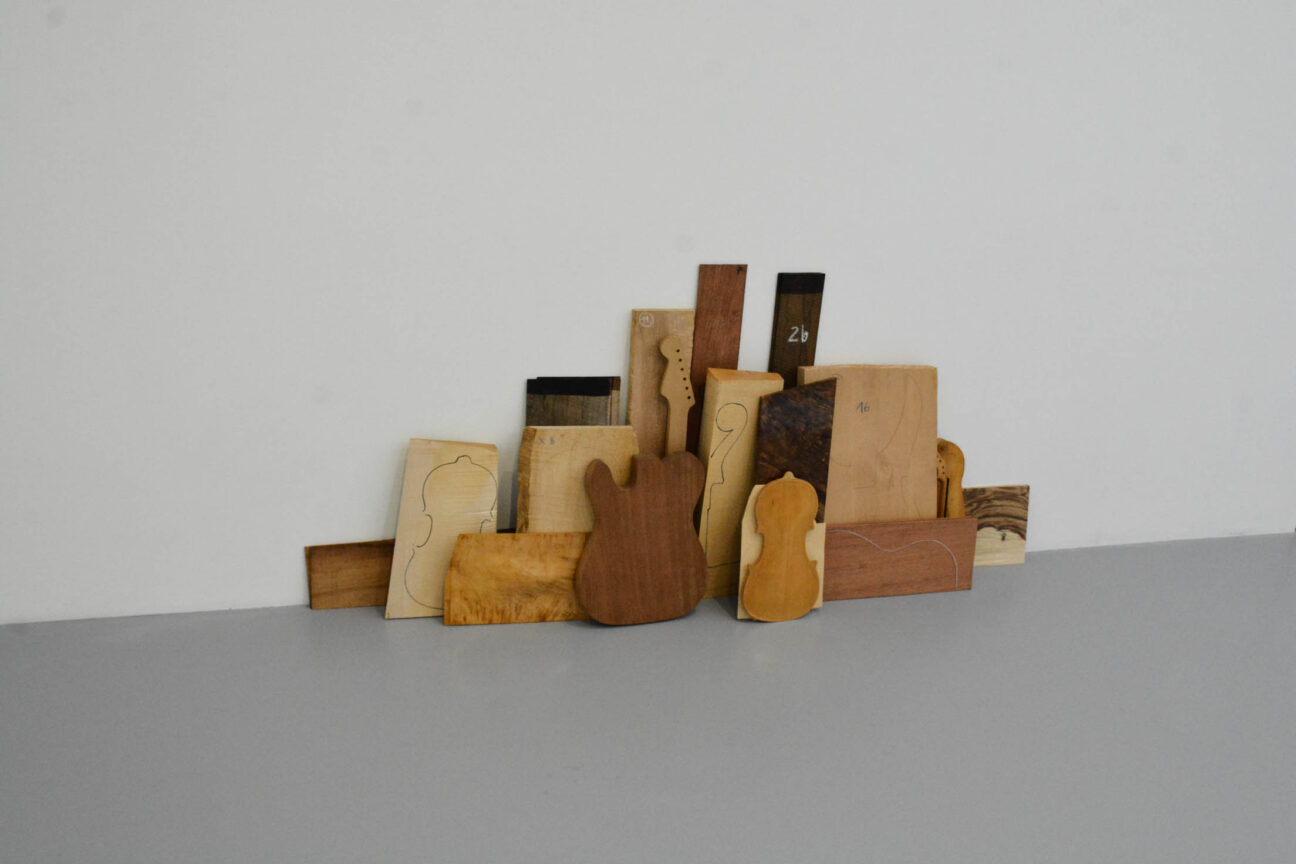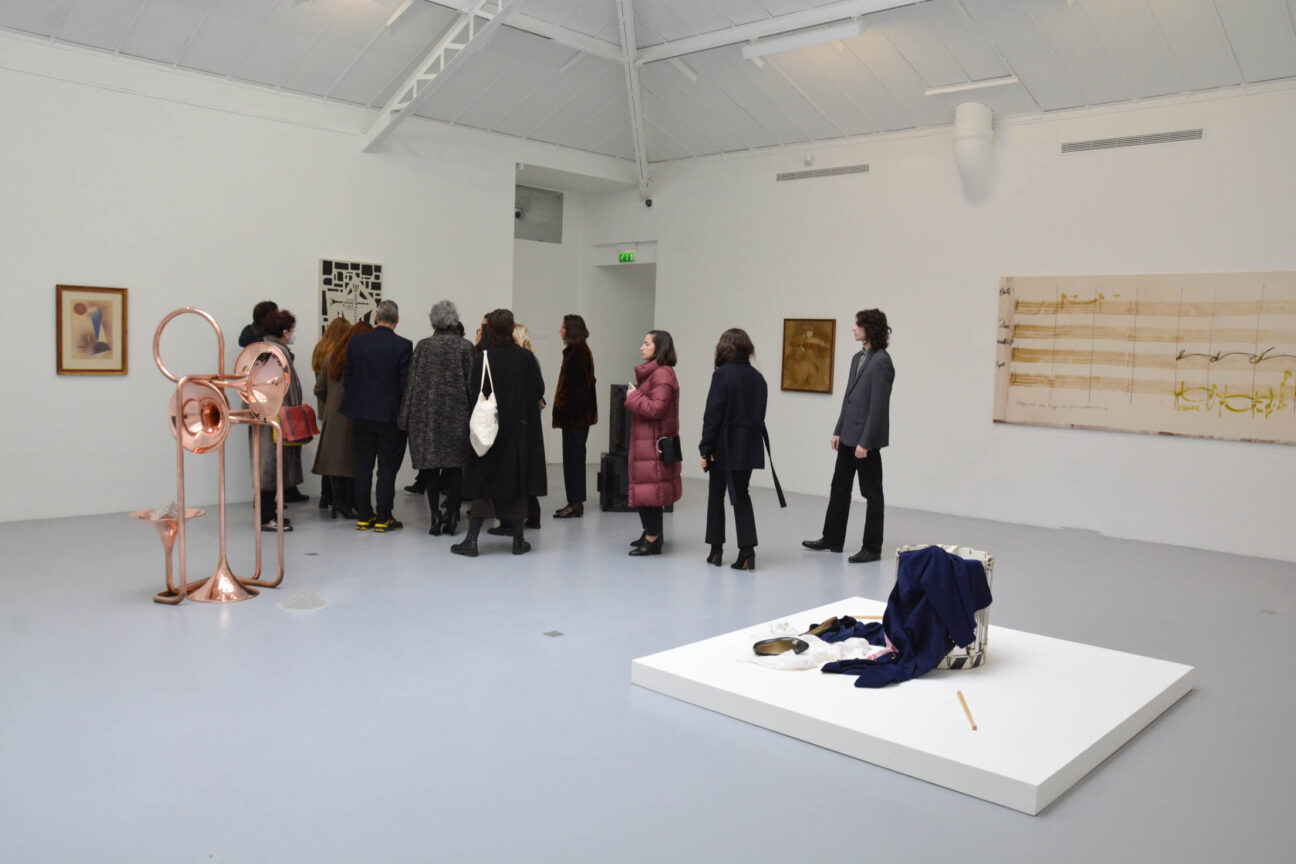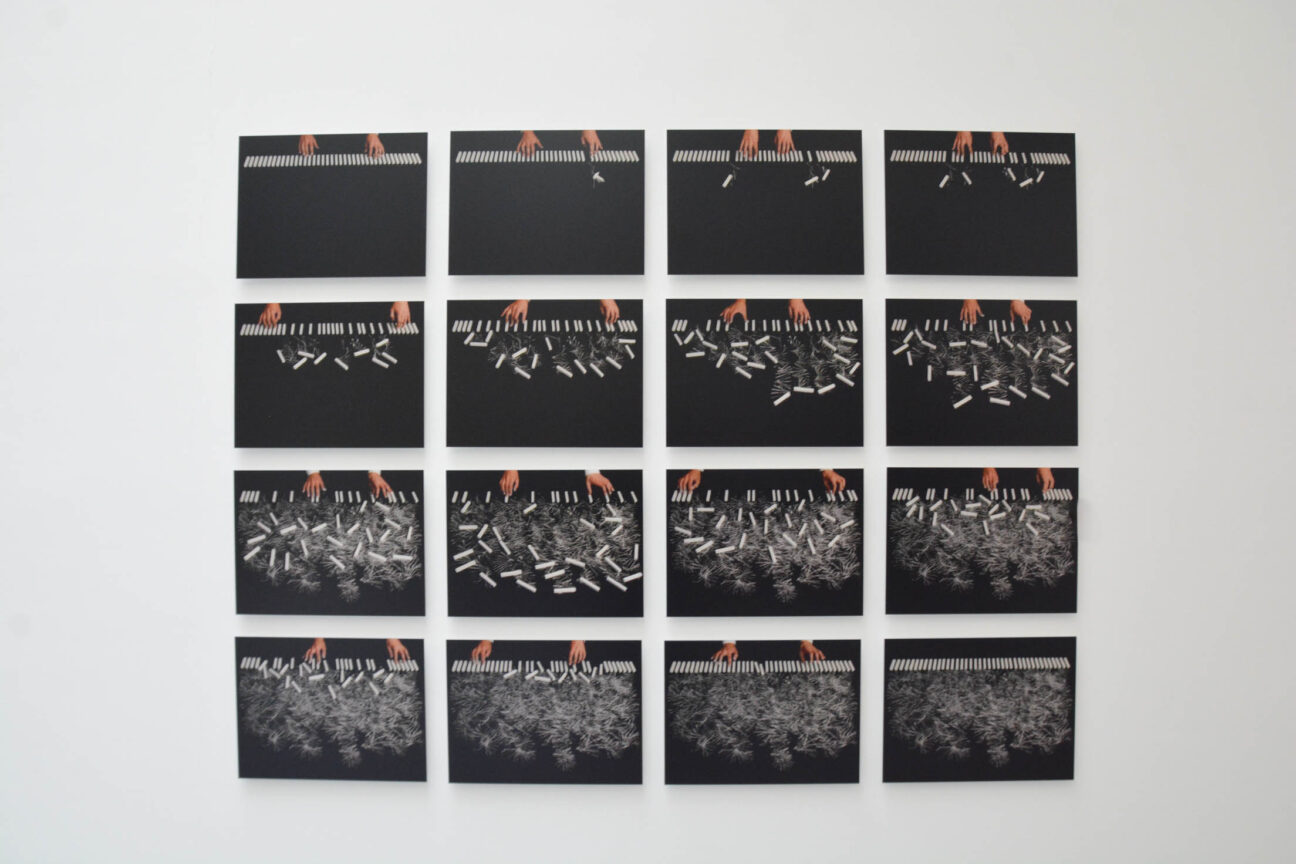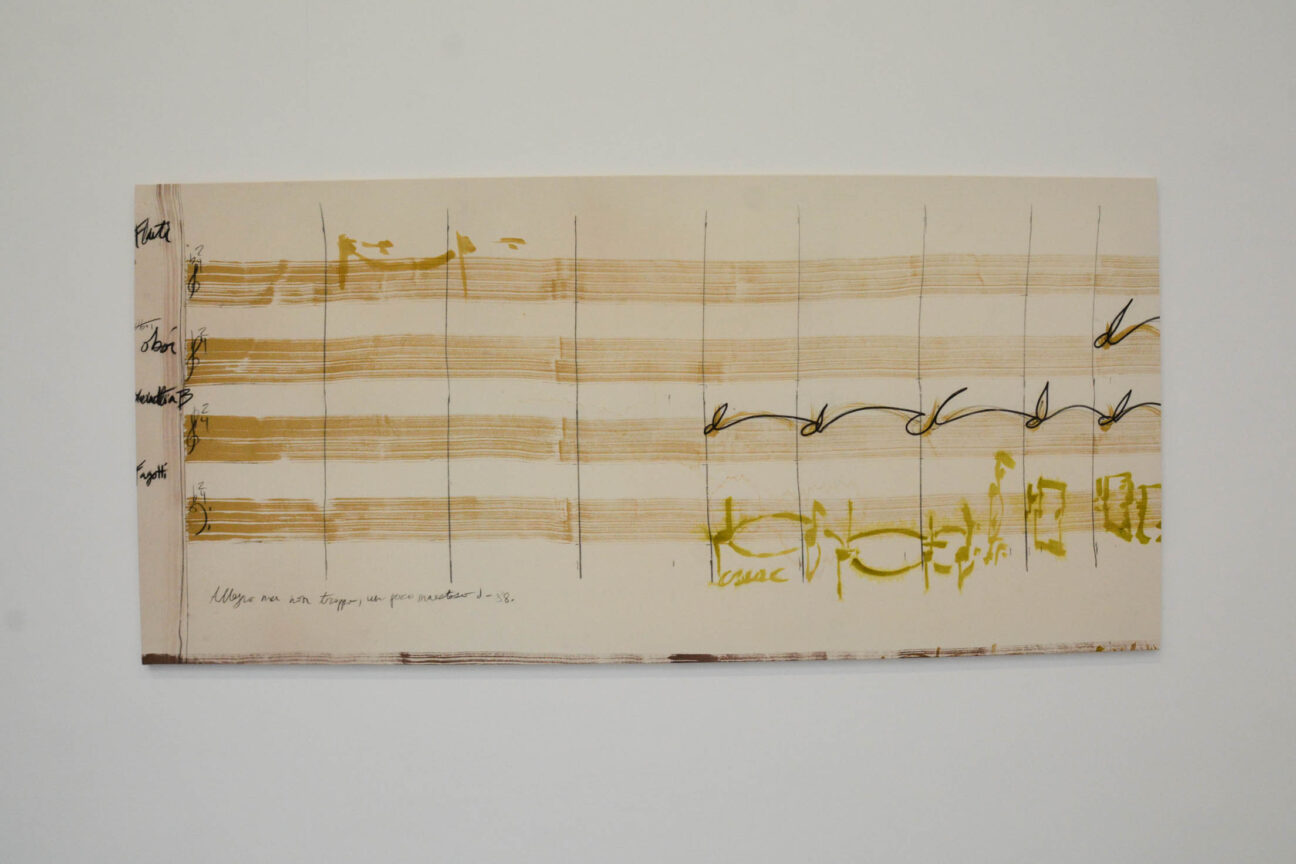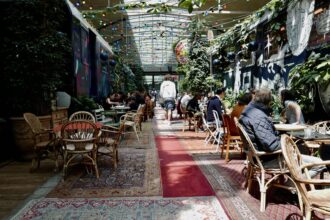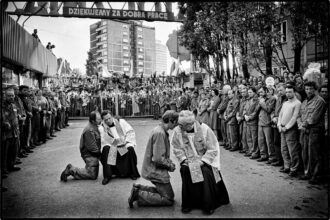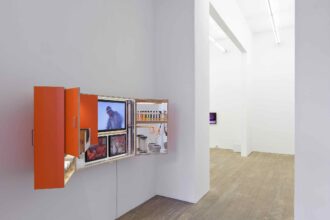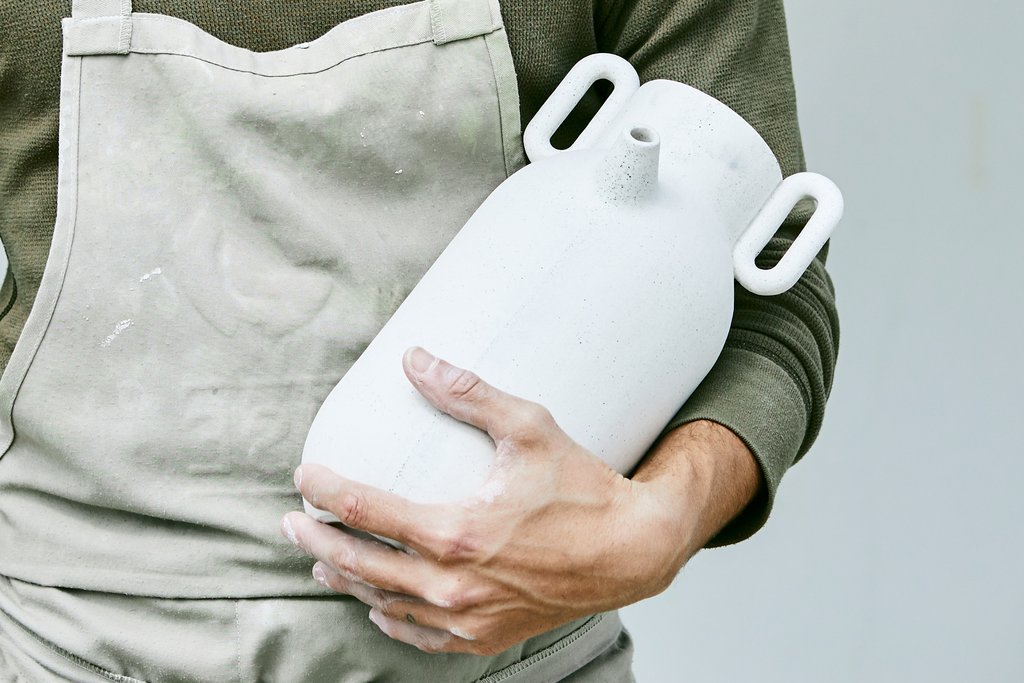Kamel Mennour. Hicham Berrada. Liam Everett. Le Salon de Musique
Hicham Berrada
Nurtured by a dual artistic and scientific background, Hicham Berrada’s work combines intuition and knowledge, science and poetry. In his works, he explores scientific protocols that mimic different natural processes and/or climatic conditions as closely as possible.
“I try to control the phenomena I mobilize as a painter controls his pigments and brushes. My brushes and pigments would be temperature, magnetism, light.” Kamel Mennour and Hicham Berrada have been working together since 2015.
Liam Everett
Liam Everett says “With painting there is a very primitive and accessible way to move between two points, back and forth, addition and subtraction. In this way there is always a return, a repeat and therefore a system of constant flux and viscosity. Out of and from this repeat is the residual – debris or sparks that one may attempt to catch and to hold. Through this process, there is the potential to remain acutely aware of the present and to observe the curious ways it reveals itself through form and light.”
Kamel Mennour and Liam Everett have been working together since 2017.
Le Salon de Musique
Can the experience of music be transposed into visuals? Gallery Mennour is turning itself into a Music Room, bringing in a range of its artists around the visual potentialities of sound with a selection of works from the 1900s to the present. Eugène Carrière’s young violinist is here in dialogue with Baya’s musicians; Latifa Echakhch’s drummer’s abandoned materials resonate with Valentin Carron’s smashed instruments; Bertrand Lavier’s Fauvist’ cello vibrates with Petrit Halilaj’s ocarinas; Alicja Kwade’s brass instrument constructions get in tune with Robin Rhode’s piano keys; Man Ray’s metronomic eye harmonises with the conductor’s hands filmed by Douglas Gordon; and the score borrowed by Matthew Lutz-Kinoy from a deaf Ludwig Van Beethoven resonates with John Cage’s 4’33’’ of silence.
Place/ Kamel Mennour, Paris
ft/ Franciszek Kizinski

